Make miniatures of your miniatures with this kit from Mozo
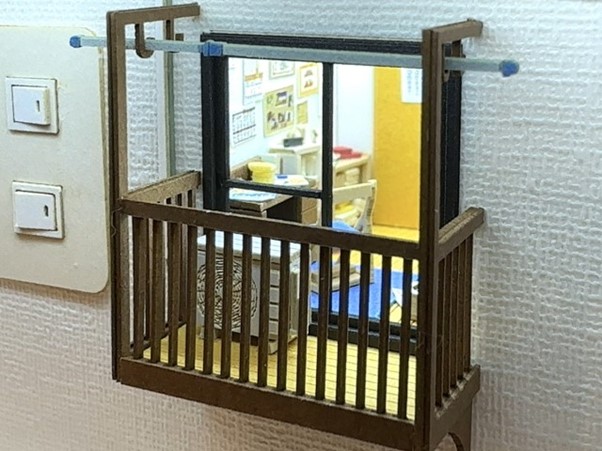
Creating the perfect Japanese apartment for the Borrowers in your life.
Miniatures have quite the following in Japan because, let’s be honest, who can’t resist the adorable charm of tiny versions of everyday objects? Our Japanese-language reporter Saya Togashi is a big fan herself. She’s especially fascinated by the Droste effect—seeing the exact same object repeated within itself, like a TV showing a TV showing a TV. For her, Mozo’s new Kobito (little person) series is the ultimate treasure for miniature fans. However, it’s not just the intricate nature of the miniatures that she’s in love with, it’s the narratives that are incorporated within them.
Mozu is an artist known for creating a multitude of eye-catching works that often go viral on Japanese SNS, such as stop-motion animations and trick art doodles, but the Kobito papercraft series born from his collaboration with Sankei’s Miniatuart is what has sparked excitement among miniature enthusiasts recently.

Miniatuart are papercraft kits with parts that are laser-cut from thick paper. There are all sorts of products in different shapes and sizes, but the Kobito’s Balcony is being sold at 2,530 yen (US$17.11) and it fits into a palm-sized box.

Once you open the box, out pops 18 sheets of paper, all about the size of business cards and color-coded.
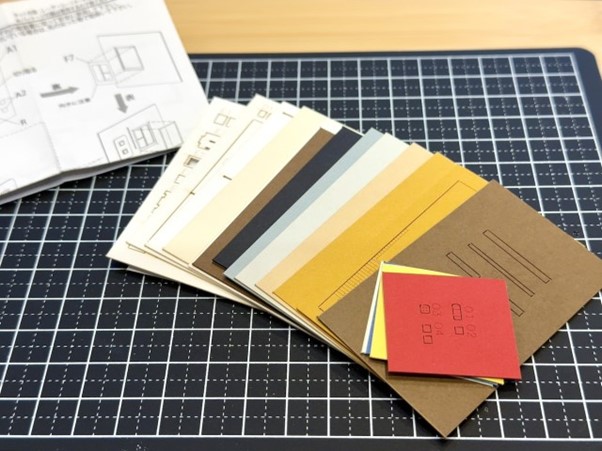
Now it’s time to get building! The parts are designed so that, no matter how tiny they actually are, you only need a couple of cuts with a knife to pop them out cleanly. This saves the headache of trying to cut along the lines, and it prevents those irritating rough edges. Plus, any bits leftover are easily taken care of.
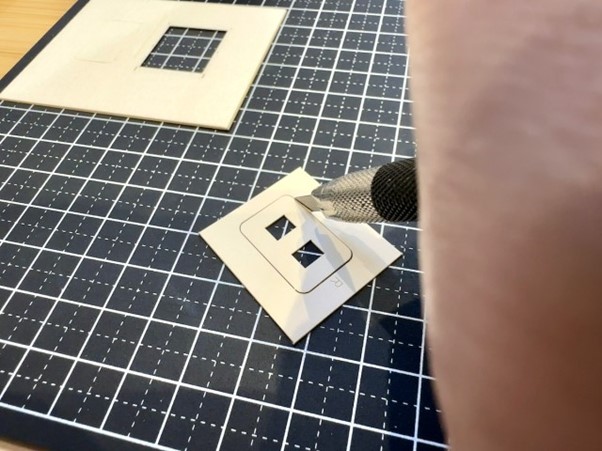
Something quite striking about Mozu’s products is how they’re sized to match real-life objects. Imagine a bathroom fitting behind a tile in a similar bathroom or a secret base tucked behind a wall outlet. This balcony is made to sit next to a light switch on a wall.
As the thick paper feels rather solid, it fits together much like a plastic model kit, can stand firmly, and creates realistic looking shadows around places like the window frame.
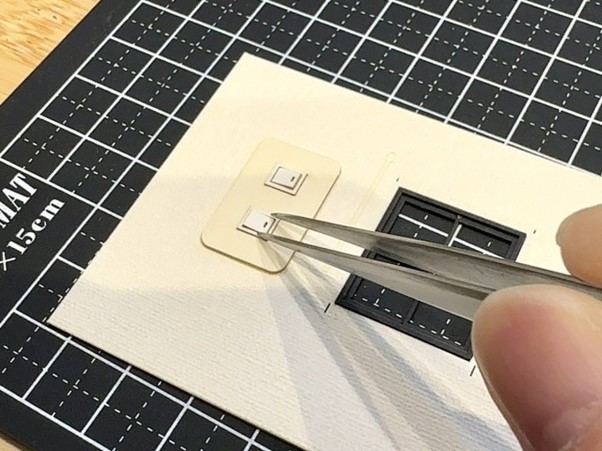
For those intricate items that are tricky to cut by hand—like the outdoor unit of the air conditioner or the balcony lattice—Sankei has made life a lot easier by pre-cutting them. It’s mind-blowing how much time and effort they have devoted to laser-cutting, allowing anyone to pick one up and complete it quickly.
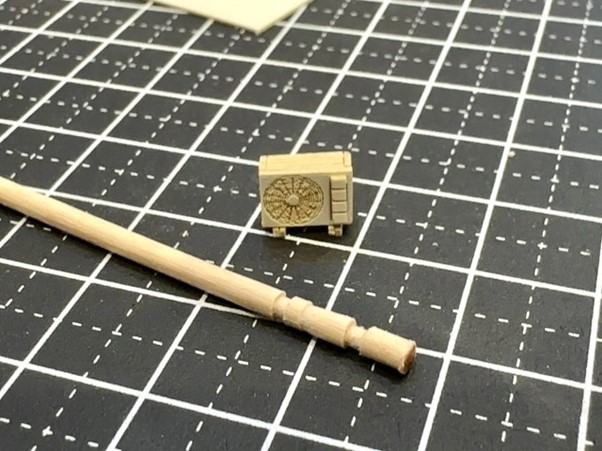
The Kobito’s Balcony started trending at the time of its release because its realism was simply ‘too real’, from the collection of manga books to the carelessly tossed randoseru backpack. While the school timetable and certificates might be a bit blurry—likely due to printing limitations—the calligraphy of densetsu no nidone (the legendary second sleep) is crystal clear.
While the clock on the wall is constructed by layering thick paper on top of the sheet with the face of the clock, the actual Mozo papercraft features an embedded wristwatch.
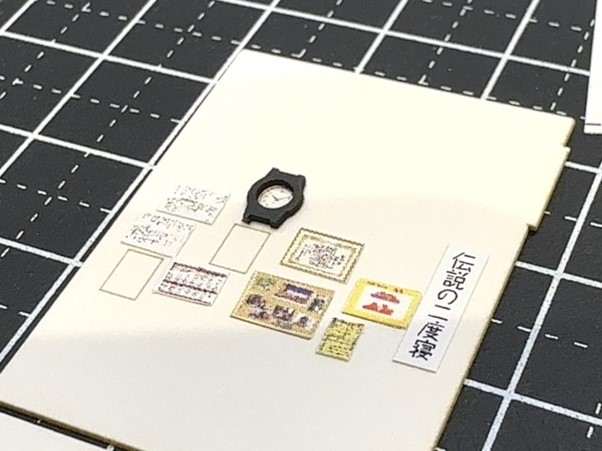
As Saya got lost in the stunning details of both Mozo’s creations and Sankei’s craftsmanship, she realized she had gotten a bit careless with the cutter. She threw some tape onto the back and tapped into her skill of covering up mistakes to get closer to the original look.
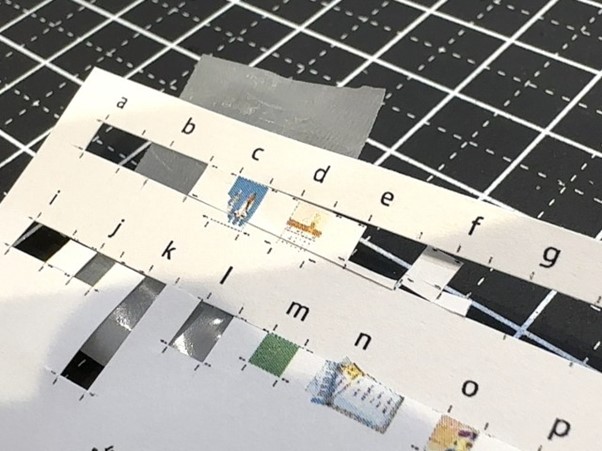
She completed the main parts—the light switch, outside wall, inside wall and balcony. With a little care, anybody can reach this point…
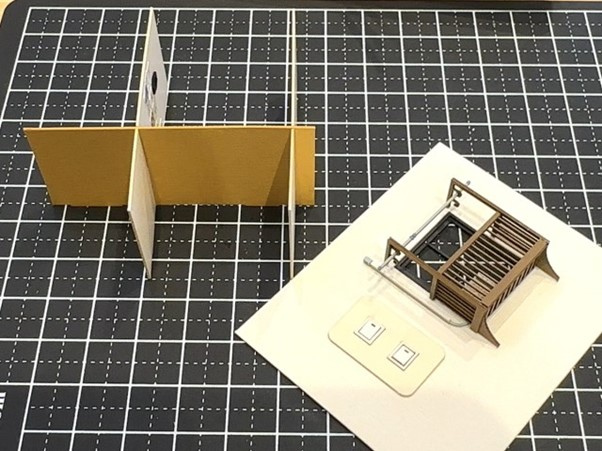
…but then comes nightmare mode.
Next up is the furniture and small belongings but they’re so tiny! They’re on a completely different level of size to the floor and walls.
She assembled the bookshelf and scraps of paper to look like books, mimicking the original papercraft, which featured comic books and magazines aimed at young boys.
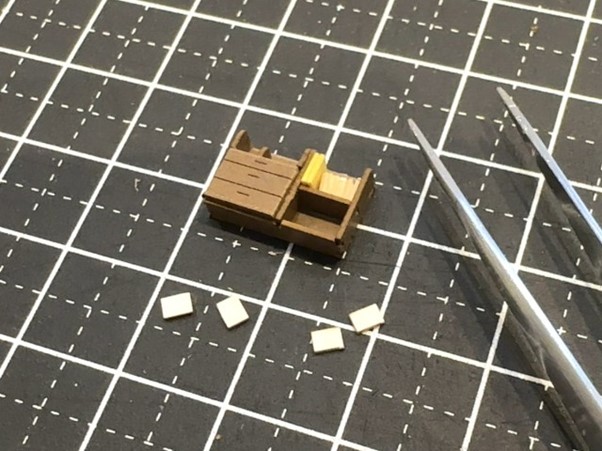
Then the epic battle with glue began. Placing parts accurately got challenging, she accidentally got glue in places where no glue should be, and some small pieces of fluff and leftover parts got attached too.
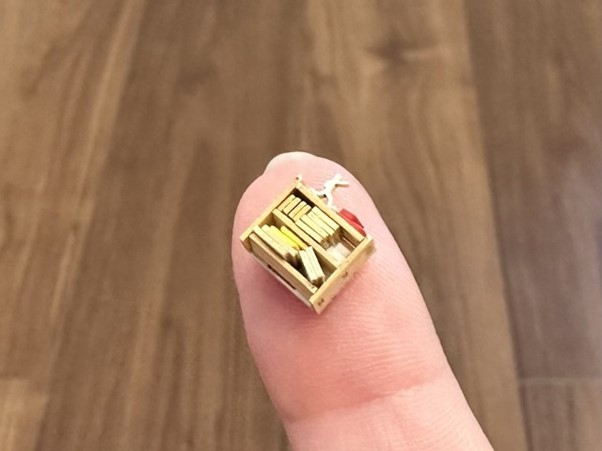
That’s when she realized that the bucket for washing brushes had gotten blown off the table. She took a quick break from construction to search for it.
The parts were so tiny that they could easily be blown away by the breeze from the air conditioner so from then on—her room became a no wind zone. On top of that, she was also feeling a bit oxygen-deprived from the intense focus she was putting on her fingers. To put it mildly, it was driving her crazy.
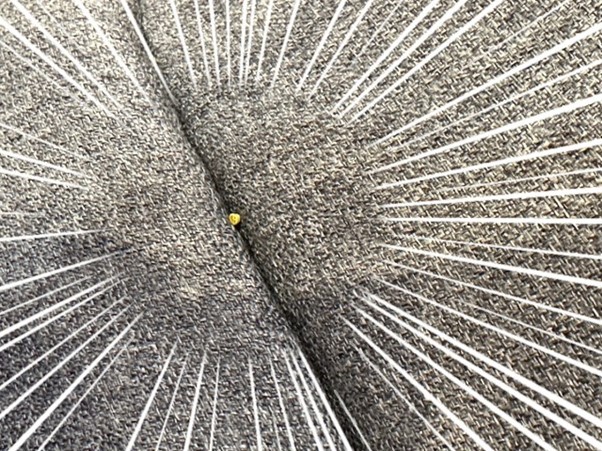
Struggling for breath, she pushed on. See that little piece on the bottom right that looks like trash? It’s actually a Lego house! Compared to the simpler assembly in the first half, the second half is about 100 times more difficult.
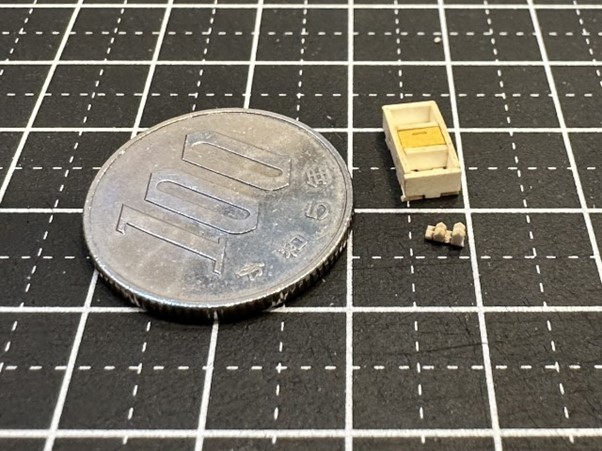
But despite the struggles, the recreation of the small objects like the slatted-wood shelves was outstanding.
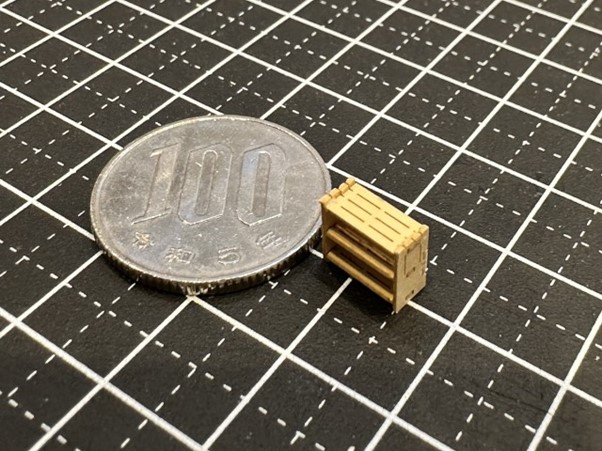
As the work continued, it went past being just fun, entering into the realm of madness. The minute details of Mozu’s work have been fully reproduced here—a clay doll that was possibly made in art class, a red minicar, and a pencil case closed with a magnet. You can really get a sense of a young elementary school boy’s lifestyle.
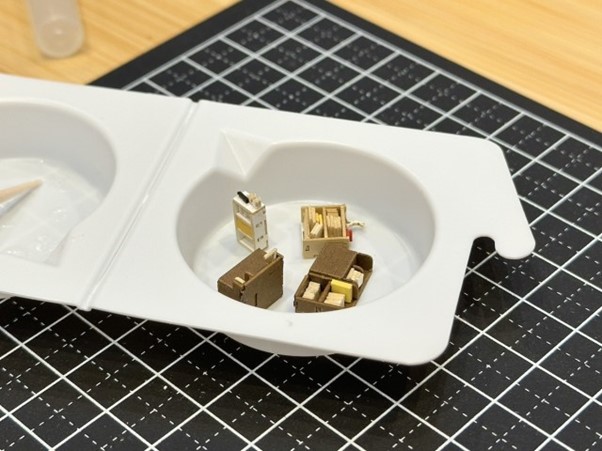
The final stage involved placing all of the parts she had crafted so far into the scene. For Saya, this was the fun reward for enduring the hellish construction she had just experienced.
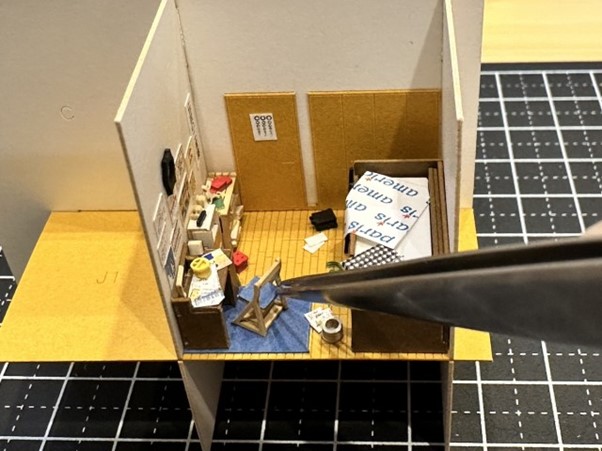
The last task was to place the completed product back into its original case. There were instructions for creating a skylight by opening up a hole in the ceiling but she decided to go with a light she picked up from a 100 yen store instead.
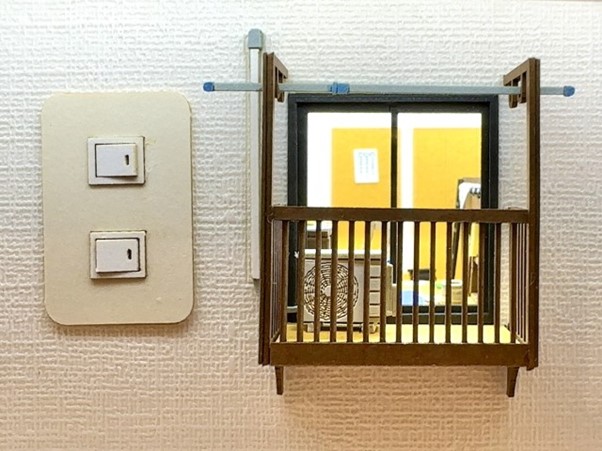
The wallpaper looked exactly like what you would find in a house—so much so that you’d think it couldn’t possibly be anything else.
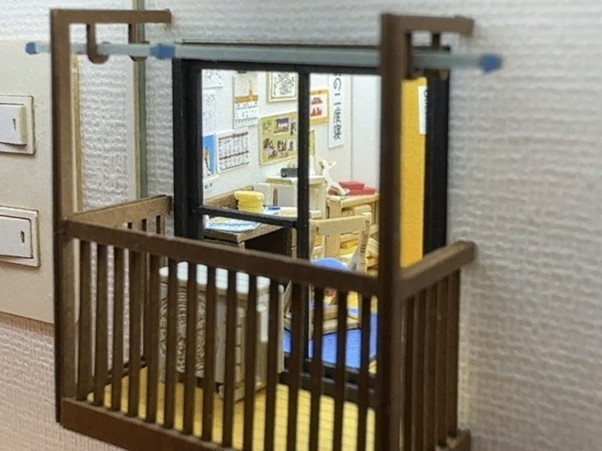
Next to the light switch, you can see the balcony with an air conditioner and a pole for hanging laundry.
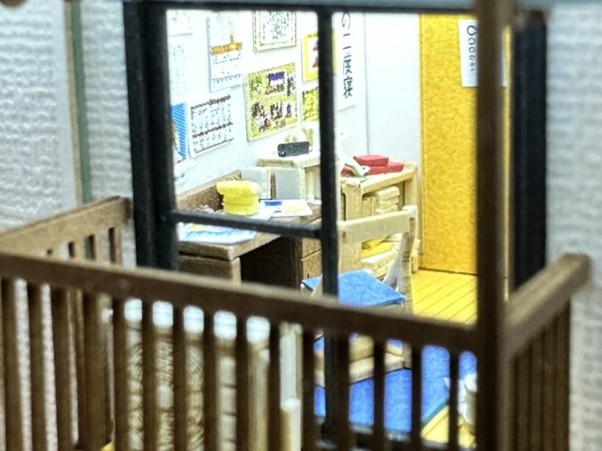
Due to the composition of the piece, the whole room can’t be seen but it gives you a wonderful sense of peeking into a secret world. There’s a loft bed, a study desk, shelving units and many things attached to the wall.
It’s just difficult to believe that this whole thing is palm-sized!
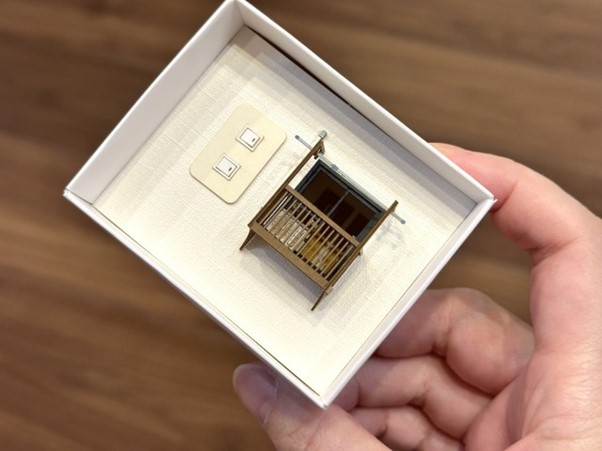
Looking at her completed miniature, all the suffering she had gone through melted away. That is the magic of miniatures–no matter how tough the journey is, it is all worth it in the end.
Some of the details from the original papercraft may have been lost in the size reduction for commercialization, but this kit does an amazing job of reproducing Mozu’s incredible tiny scene.
It’s possible to see the original work by attending Mozu’s Welcome to a Small World miniature exhibition, currently being held in Miyagi until October 27 2024, after which time it will move to Okinawa on January 30 2025. If you can get there, it is definitely worth checking out. If that’s not possible, you can browse Mozu’s social media accounts (listed below) and admire his many creations.
Better yet, follow what Saya did, and explore Sankei’s Miniatuart products, which are available for purchase on shopping site Rakuten. Embrace the world of miniatures!
Exhibition information
Mozu Miniature Exhibition Welcome to a Small World / Mozuミニチュア展 ようこそ、ちいさな世界へ
Address: Miyagi-ken, Sendai-shi, Miyagino-ku, Tsutsujigaoka 2-5-26, Sendai Station East Exit Campus, Tohoku Fukushi University Gallery Minimori
宮城県仙台市宮城野区榴岡2-5-26 東北福祉大学仙台駅東口キャンパス内東北福祉大学ギャラリーミニモリ
Open: 10:00 a.m.-5:00 p.m.
Exhibition runs until 27 October, 2024
Ticket prices: 1,100 yen for advance tickets; 1,300 yen on the day
Website
Mozu’s exhibition in Okinawa (from 2025/01/30)
Mozu Miniature Exhibition Welcome to a Small World/ Mozuミニチュア展 ようこそ、ちいさな世界へ
Address: Okinawa-ken, Urasoe, Nakama 1-9-2, Urasoe Art Museum
沖縄県浦添市仲間1-9-2浦添市美術館
Open: 9:30 a.m.-5:00 p.m. (until 7:00 p.m. on Fridays)
Exhibition opens on 30 January, 2025
Ticket prices: 1,000 yen for advance tickets; 1,200 yen on the day
Website
Related: Mozu Website, Instagram, Twitter, YouTube
Photos ©SoraNews24
● Want to hear about SoraNews24’s latest articles as soon as they’re published? Follow us on Facebook and Twitter!
Credit:

0 comments: